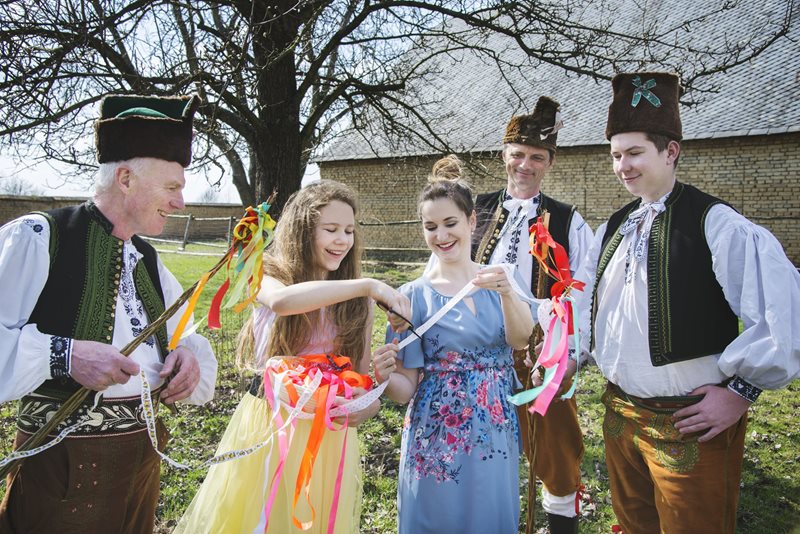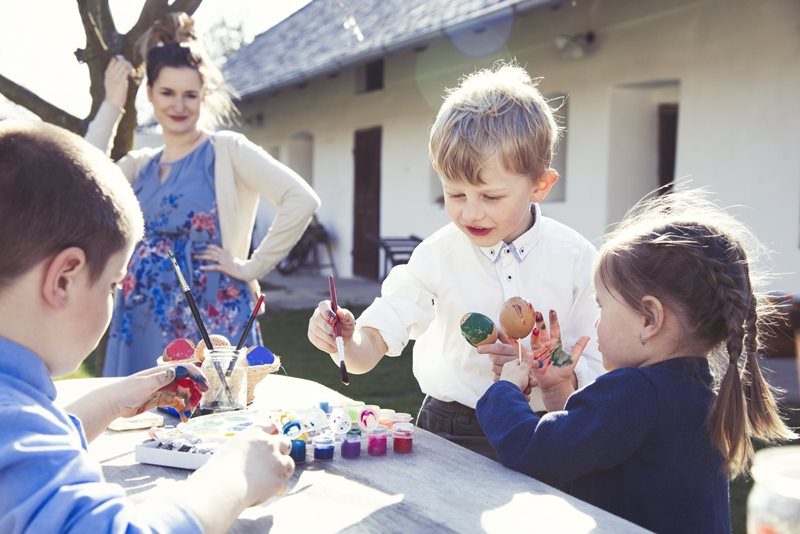Easter means that spring has arrived. It is a moveable holiday. In the west Christian tradition, Easter is celebrated on the first weekend after the first spring full moon that follows the equinox, which is in March or April. This year, it falls on 29 March - 1 April. Easter celebrations go a long way back into the past. The Czech Republic, like any other European country, has Jewish-Christian roots, and so the spring festival is a combination of pagan, Jewish and Christian traditions. Today, however, it is all under the Christian veil where believers commemorate Christ’s resurrection.
Holy Week and customs
The week preceding Easter is called Holy Week. The first important day for Christians is Ash Wednesday, which commemorates Judas’ betrayal, or bad deed. The name ash stems from the tradition of sweeping ashes from the chimney on that day. It is a cleaning day, but we should not get upset as one superstition says that a grumpy face could then return every Wednesday of the year. You should eat some spinach, cabbage or nettle salad on Green Thursday to stay healthy all year round, as one of the Easter customs states. The church bells ring for the last time at the Thursday mass before they fly off to Rome. On Good Friday, the sounds of the bells were replaced with various rattles or clappers, small and big, attached to wheelbarrows. Good Friday is also the day of mourning over Jesus’ death and a day of strict fasting. Holy Saturday is a day of silence and expectation. But it was also a day of cleaning and whitewashing. The preparation for Easter Sunday had to be diligent. Every household had to have a set table with some Easter stuffing, a ram cake or cross bun, and Judas buns. The celebrations continue on Sunday when churches and cathedrals again fill up with people and believers remember Christ’s resurrection. And Monday? Monday is all about folk traditions! And what are they?
Painted eggs
The most famous symbol of Easter, not only in the Czech Republic, is the painted egg, which used to represent fertility and new life. Today, they are only used for decoration. Empty eggshells are decorated in a typical way, according to family or regional tradition. The decorations are varied. You can find eggs that are painted and carved, dyed in onion peel and other natural colours, etched, wired, decorated with wax or perforated. The straw decorating method is very traditional. The egg is initially dyed, and miniature pieces of prepared straw are then glued onto the shell. You can find beautiful instructions here. Some eggs look like works of art and their production can even take a few days. And yet, they are so fragile!The whip
The custom of whipping girls and women with a handmade whip has been a Czech Easter tradition for several centuries. The first written records that mention this whipping date back to the 14th century, but the tradition is probably much older, perhaps going back to pre-Christian times. Boys and men used to whip girls with willow branches to help them stay healthy and young. Over time, the branches started to be braided together and, in the end, a long and elaborately braided whip became the pride of its owner. Today, some whips can be several metres long. Naturally, such whips are only used for decoration. In the Czech Republic, boys and men still go whipping, but this tradition is slowly disappearing from the cities. Traditionally, boys and men walk around their neighbourhood with the whip and ask for a reward. They receive a painted egg, a coloured ribbon for their whip, something sweet or something strong. Men especially enjoy the tradition of whipping in Moravia where home-made brandy is popular.
Where to see the tradition
All Czech open-air museums strive to keep the Czech folk traditions alive. The most popular event is Easter in Wallachia, which takes places in the open-air museum in Rožnov pod Radhoštěm in Moravia. Another open-air museum that keeps the traditional Easter customs is Veselý Kopec in East Bohemia. Almost all the historical buildings are decorated, and visitors are welcome with open arms. The open-air museum employees, wearing traditional costumes, will tell you all about the traditional folk customs, some of which have long been forgotten. Usually, you can also make a small souvenir to take home with you.
A spiritual dimension
The spiritual dimension of Easter is also important in the Catholic tradition in the Czech Republic. It is commemorated at many pilgrimage sites, such as the Holy Mountain in Příbram in Central Bohemia, at the Roman Catholic parish in Velehrad in Moravia, or at Zelená hora near Žďár nad Sázavou, which is inscribed in the UNESCO list.






-(1).jpg?width=1920&height=1204&ext=.jpg)




